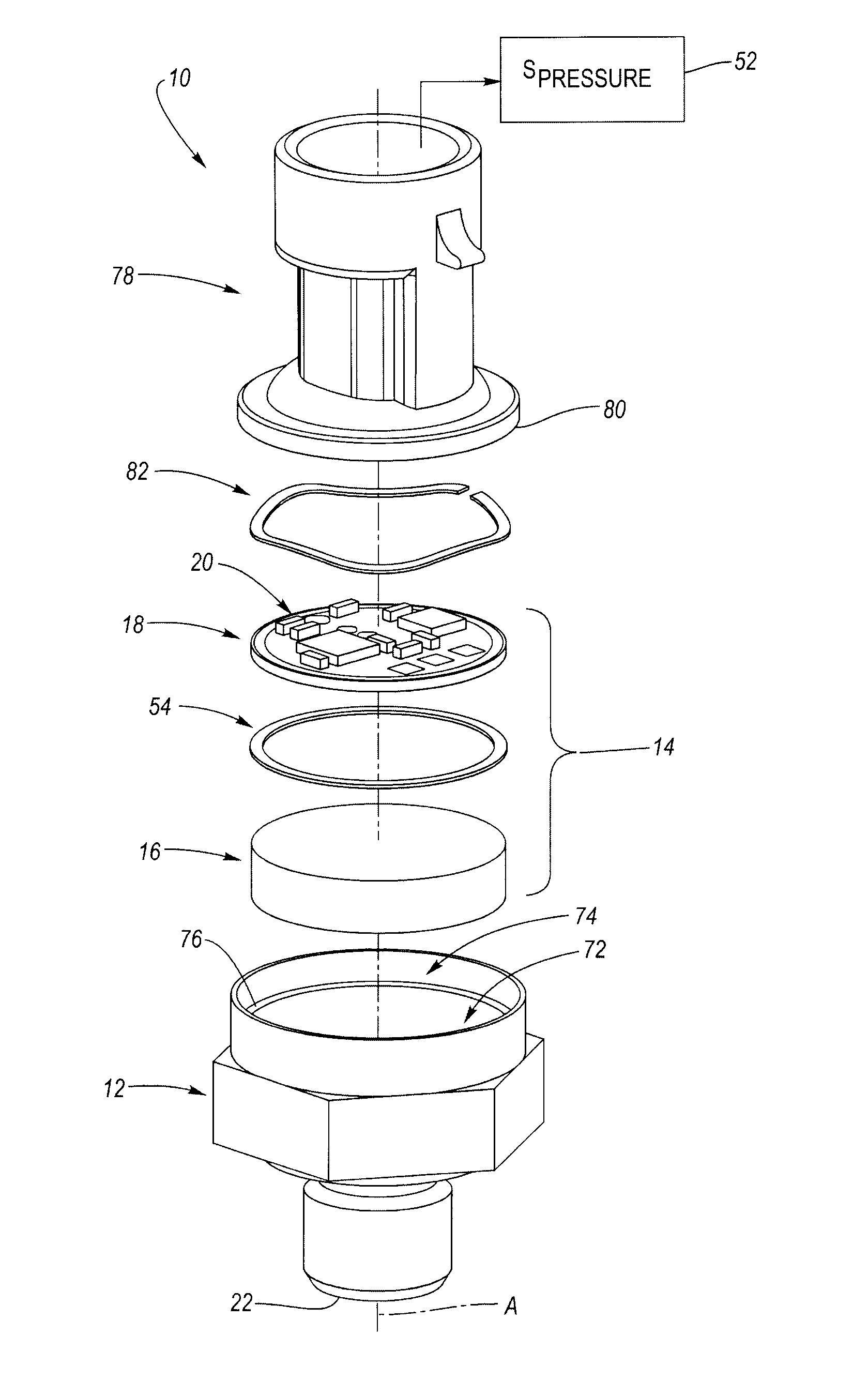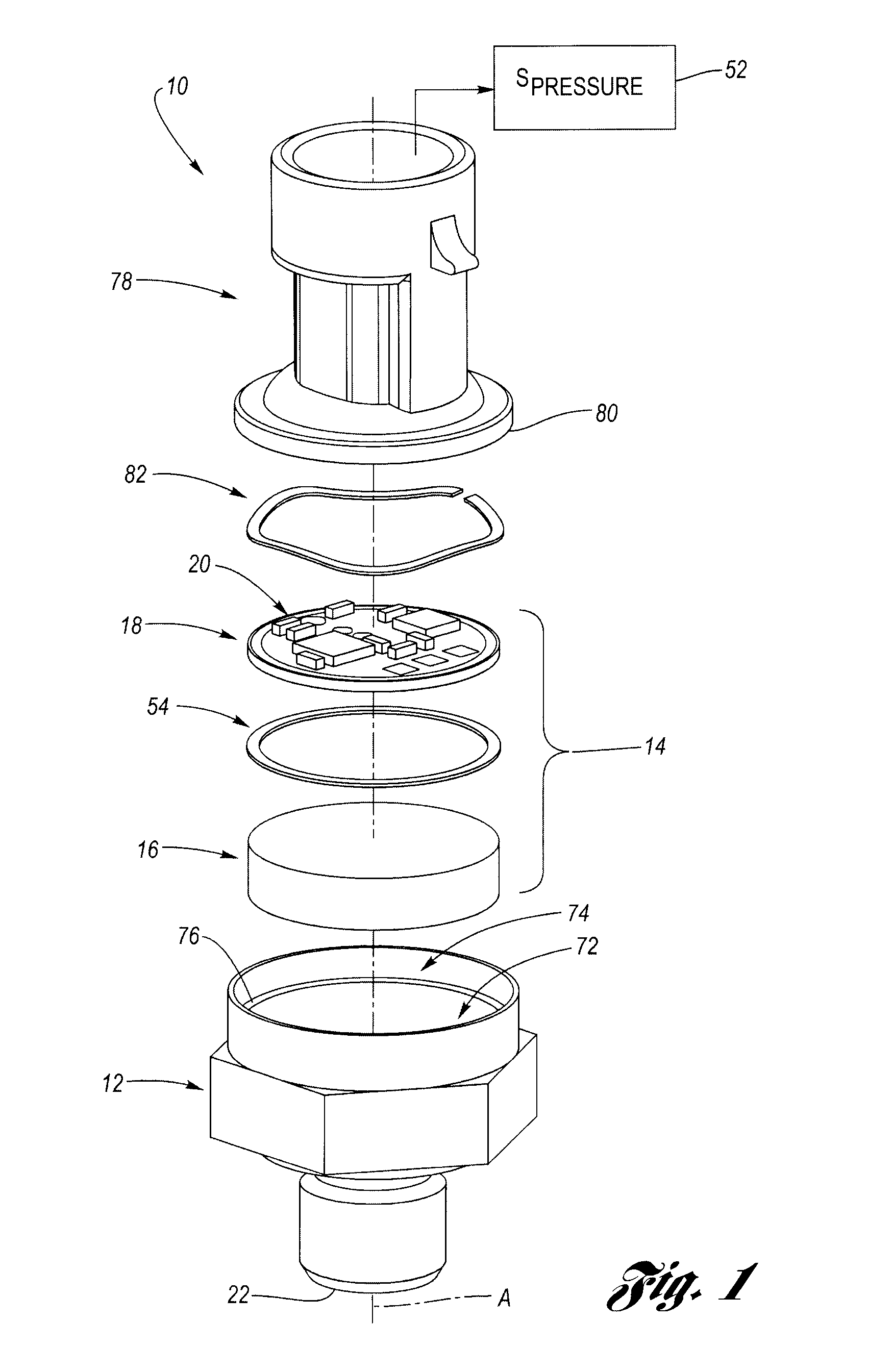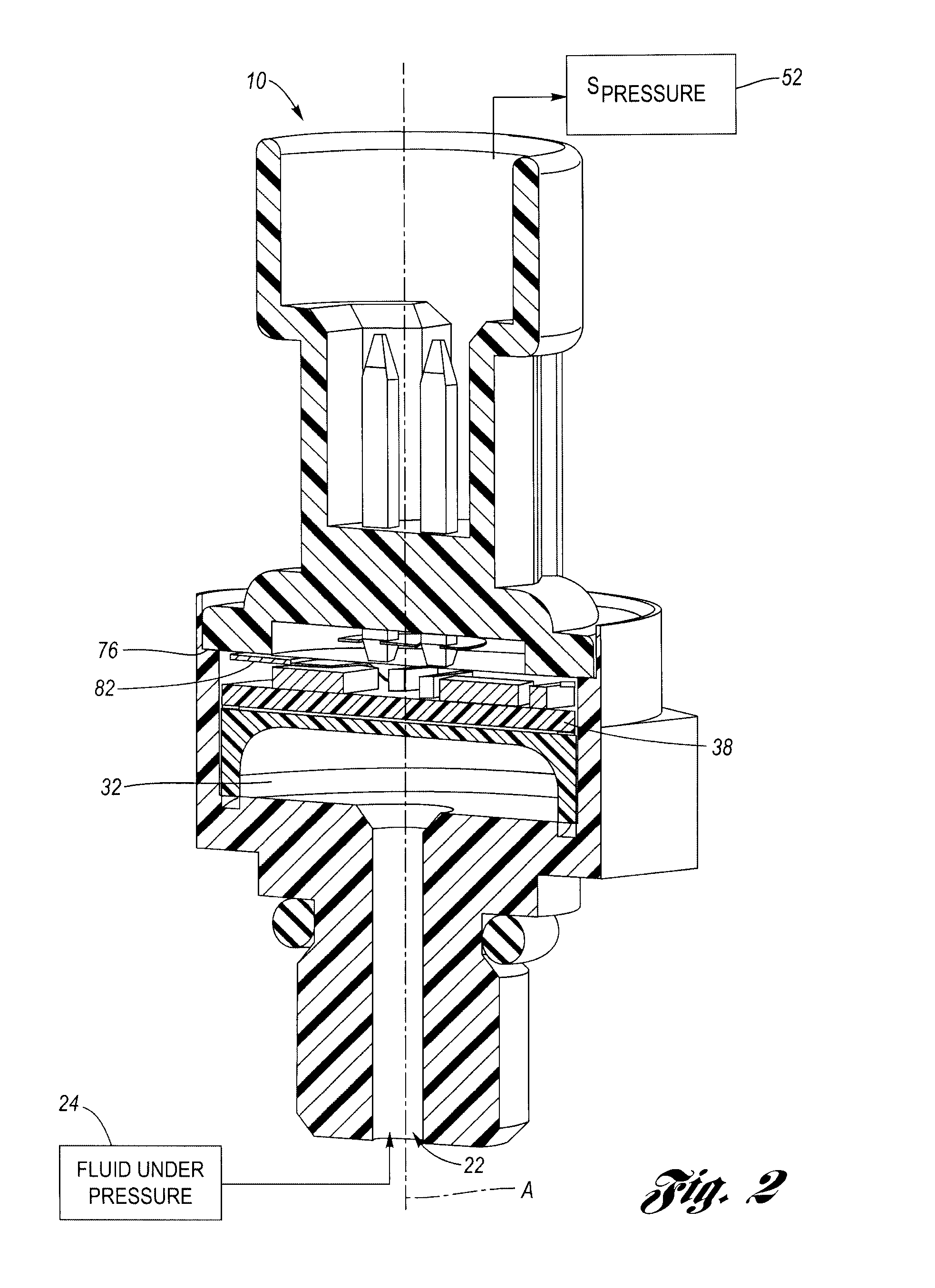Capacitive pressure sensor
a capacitive pressure sensor and capacitance variation technology, applied in the field of sensors, can solve the problems of complex design disclosed in park, increased number of parts, and general incompatibility of conventional sensing membranes with a wide range of media, so as to improve reliability, simplify manufacturing and assembly process, and reduce cost
- Summary
- Abstract
- Description
- Claims
- Application Information
AI Technical Summary
Benefits of technology
Problems solved by technology
Method used
Image
Examples
Embodiment Construction
[0028]FIG. 1 shows a capacitive pressure sensor 10 in accordance with the present invention in an exploded, non-assembled state. Sensor 10 is formed of a plurality of components which, when assembled, fit together in a concentrically aligned manner along a main longitudinal axis, designated axis “A” in FIG. 1. Sensor 10 includes a base-port 12, a transducer 14 having (i) a diaphragm 16 and a (ii) sensing electrode body 18, and a pressure signal generating circuit 20. The invention features a sensor with a configuration having a reduced number of parts, which improves cost effectiveness and decreases the complexity of manufacturing.
[0029]FIG. 2 is a cross-sectional view of sensor 10 in an assembled state, which illustrates the axial compactness of the assembly. From an operational point of view, base port 12 has an opening 22 configured to receive a fluid, designated by block 24, under pressure having a value that may vary over time. This is the “input.” The sensor 10, more specifica...
PUM
 Login to View More
Login to View More Abstract
Description
Claims
Application Information
 Login to View More
Login to View More - R&D
- Intellectual Property
- Life Sciences
- Materials
- Tech Scout
- Unparalleled Data Quality
- Higher Quality Content
- 60% Fewer Hallucinations
Browse by: Latest US Patents, China's latest patents, Technical Efficacy Thesaurus, Application Domain, Technology Topic, Popular Technical Reports.
© 2025 PatSnap. All rights reserved.Legal|Privacy policy|Modern Slavery Act Transparency Statement|Sitemap|About US| Contact US: help@patsnap.com



